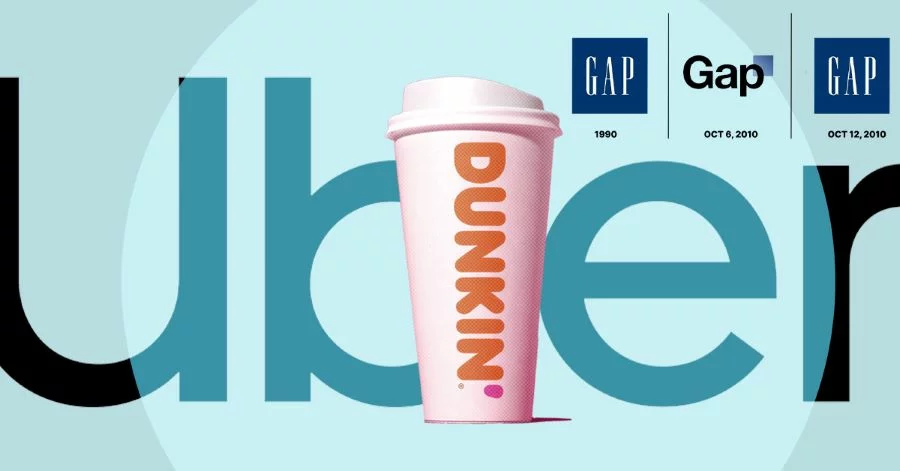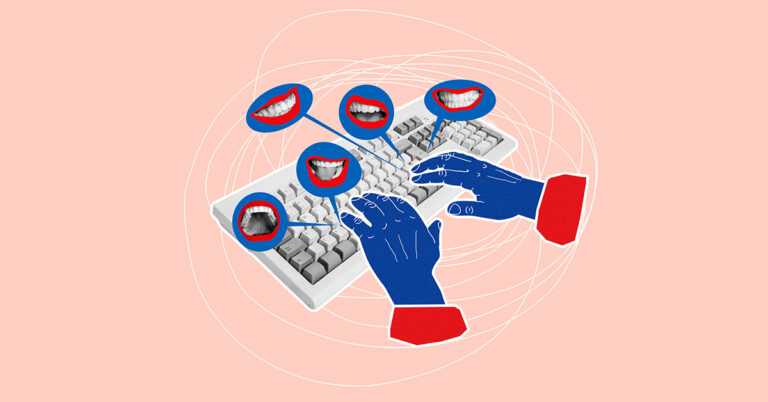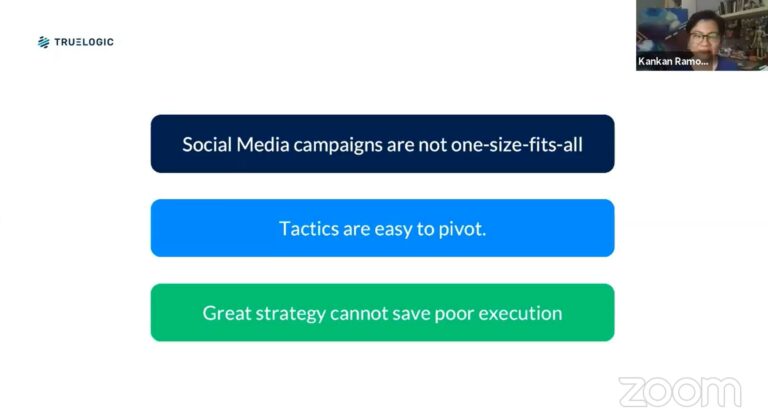Truelogic Episode 66 Recap: When is It Time to Rebrand?

Podcast Transcription
Berns San Juan: Abandon ship! This is the topic for today’s Truelogic DX Podcast, where we’re going to talk about whether is it time to abandon ship on your brand. Or in the least, is it time to rebrand or to refresh your brand? In this conversation, all of it is going to be, we’re going to be talking about the target market, your brand storytelling, and so on and so forth.
When to Rebrand Your Business?
Berns San Juan: The question of when to rebrand your business is one that comes up at almost every company, at some stage. So speaking from experience, for example, there was a serious consideration about whether or not Truelogic should rebrand.
If you’re watching the YouTube shorts of this, by the way, you’re going to see that I’m wearing the company logo, but you might be surprised to know that this wasn’t our logo 12 years ago, and I was actually in love with that old logo, right? One of the things that you might encounter when you’re doing rebranding is you might have the top of your organization resisting the change to a new brand. But if you ask me what the story was of our old logo, and what the story of the new logo was, I couldn’t tell you the story of the old, but I can tell you there’s a story behind the new logo.
At some point, I think a brand stops, it takes five, and it tries to figure out who it is and if is it relevant to its target market. 12 years ago, we wanted to be the digital employer of choice. And so the way we branded and the material we created and the content we created and the logo and the website, it all sort of reflected that. We wanted to hire really good talent, we wanted to hire writers, we wanted to hire technical people, we wanted to hire marketers. And so we dressed ourselves up as a marketing company or a digital marketing company employer of choice.
But fast forward to like six, seven years later, and that’s when it shifted. The Philippine market was sort of waking up, we realized that there was a lot of potential. 12 years ago to eight years ago, or 12 years ago to maybe even just seven years ago, our play was an international play. The world was our oyster, everybody was our client. And when the Philippine market started waking up, we realized, you know what, there’s enough opportunity here. So how do we do that? How do we split off the brands? How do we create a brand that addresses the US markets and Australian markets? But more important than that, how do we create a brand locally that could address the specific needs of the local market?
This is why we rebranded Truelogic Inc. It isn’t taken lightly, I think we probably went through like a two-year process before we finally got from start to finish, right? So it wasn’t a sudden overnight shift. But before we do it, and just like any other brand owner, business owner, or brand ambassador out there who might be listening to this, you want to make sure that the effort is worth it because it did take a lot of time, energy, and resources.
What is a Rebrand?
Berns San Juan: It’s really the process of refreshing or reshaping the story customers tell themselves about your brand. So again, let’s take Truelogic as an example. The word we wanted people to connect to when it came to Truelogic 12 years ago was employer. Fast forward to seven years later, what we wanted was for local enterprises to associate the idea of Truelogic as a ‘local digital marketing provider’, ‘local digital marketing solutions’.
Rebrands can be pretty subtle. It can be small updates to the logos. I would say changes to the color palette of the business and the font choices. The Gap is a great example of a bad font choice. I’ll jump into that again later. But it can also be extremely big sweeping changes like Facebook to Meta. That is a big sweeping change. When Mark Zuckerberg says, We are a Meta first organization, that is a big change. It changes the mission of the business, it changes the goals of everybody that operates in the business. It changes what stories people tell themselves and their relationship with that brand. The level of rebranding you’re doing, whether you’re just refreshing your logo, or changing your brand colors, is why, by the way, car company taglines drive me crazy because it’s different every year. Why is it different every year? Like it can’t be the power to surprise once and then it moves you and then you know, whatever.
You cannot keep changing it. You have to give it time to ruminate. You have to give it time to settle for people to be able to connect with that message. Take for example, “Just Do It”. I’ve heard that line from Nike since I was in school. Clearly, I’ve been not in school for over two decades, but they’ve given it the time it needed for people to connect with that line. Now you can’t say ‘Just Do It’ without people automatically thinking Nike. There are a lot of things that can influence your decision to rebrand.
How Frequently Should You Rebrand?

Berns San Juan: I would say if your company was in the 20s, 30s, or 40s, every 20 years would have been fine, right? If you’re a company that was built in the 90s and 2000s, I think you should be reviewing, and reassessing the identity of your brand, I would say every 7 to 10 years.
But I might say today, given how vastly different Gen Z is from Millennials to Gen Xers, and the fact that society changes so much, you might want to review whether your brand still resonates with that audience. Take, for example, I remember half a decade ago, all of my lectures were, millennials, millennials, millennials, marketing to millennials, marketing to millennials. And now all of a sudden, anybody that’s targeting anybody between the ages of 18 to 25 is talking Gen Z, If your audience changes, if your target market has changed, if society shifts, your brand has to be able to adapt with it or somebody else will. like somebody else will fill the vacuum of your failure.
Importance of Rebranding
Berns San Juan: You know, your company logo, it might look like the 1920s is missing its logo and it’s still with your company. That might be one reason you want to do it. Your brand aesthetics speak a lot to the values of your company. Apple is a great example. If you’re in my generation, you are old enough to remember what the Macintosh logo looked like, which is what it originally was. The new logo is more representative of what the company stands for than what the old compared to what the old one.
You might be moving into a new market where, let’s say, just being a new player in that market, it’s not enough or let’s say you’re a manufacturing company and your logo has the Philippine islands on it. Let’s say, how is that relevant if you move to the China market, the Hong Kong market, the Taipei market, and the Singapore market, people will not resonate with that iconography, right? You might be moving into a new market and your icon, your logo is just not something that your target market can resonate with.
The other one might be, that you realize that your brand has just become out of touch with its clientele. Let’s say you were the market leader 30 years ago, 20 years ago, but now new players, new disruptors have come in and you’re sort of perceived as the fossil of your industry, the dinosaur of your industry, which you never want to be, but you might be perceived as that. And so you’re thinking a new way of approaching the communication of your business might be necessary. So these are some of the reasons why rebranding might be necessary for you.
Signs It’s Time to Rebrand Your Business
- The overall strategy or vision for the business has changed.
For example, Truelogic from being an international provider of digital marketing services to becoming a strictly local enterprise provider right? That is an example of a big shift in both the business strategy and the vision for the business.
- You want to attract a new audience.

You might want to attract a new audience, meaning if your target market originally was international, anybody that wanted search engine optimization services, anybody that wanted social media. Now, specifically to Philippine local enterprises, that’s the audience you want to talk to only. And again, a brand that talks to everybody talks to nobody, right? So if your target audience has shifted, it might be time to rebrand your business to make the branding, and the story of your business more relatable to the people that you want to talk to.
- Your brand might be too generic.
You’re struggling to stand out against the competition because you’re just one more ice cream company, you’re just one more glass manufacturer, you’re just one more real estate company. You’re struggling to let the market know how you are better, how you are different, and why the lives of your customers are better by working with you than otherwise.
- You are expanding to new markets
I’m not sure if you guys are aware, that Truelogic launched in Hong Kong. Our Hong Kong logo is slightly different from our Truelogic logo. It really just has the Chinese words for Hong Kong on it. We’re expanding it to a new market and we want that logo to be relatable to the market we’re entering.
- Your branding feels dated.
Next, I don’t think there is an iconography that will last forever. I don’t believe that there is eternal iconography. New audiences will relate to different types of symbolism. And so, if your branding, color choices, and logos feel dated, it might be time to modernize, especially if you’re a brand that appeals to younger audiences. Meaning regardless, you might have appealed to me when I was in my teens and then you might have appealed to millennials when they were in their teens and now you might be appealing to Gen Zs now that they’re in their teens, right? But a Gen X teenager a millennial teenager and a Gen Z teenager all have different preferences. And so, if your market changes, you ought to change with them.
- Your branding is out of touch and offensive
Let’s face it, I think the world is becoming a bit more aware, a bit more politically correct and you know if you had the head of a Native American as a logo 10 years ago and it worked, it might be offensive today. So if your branding currently feels out of touch or offensive, it might be a reason to change.
- Your business has outgrown your branding.
Take for example, so I’m glad that the Truelogic logo does not look anything like the word SEO or else because we do much more than just SEO. But if it limited me in that niche, that would be problematic. If the business has outgrown what the brand does, then your logo, and your branding are limiting to your business.
- Your ownership is changing.
It is not unusual when a brand is acquired and the new acquiring company decides to make a change to the logo, right? Selecta, that’s a great example.
- Change in the core values of a business
Another reason I think is a change in the core values of a business. Your logo, your color choices, your graphics, and your visuals are all expressions of what the company believes in. If the belief system of that organization has changed, it is appropriate that the design, the logo, the branding, and the story, reflect that change.
Tips for Rebranding
- Redefine your mission, vision, and values
I think make your vision, your mission, and your values as crystal clear as you can. And when I say as crystal clear, it is crystal clear in your mind, it is crystal clear in the mind of your managers, it is crystal clear in the mind of your employees.
- Have a complete rebranding strategy that works with your existing branding
Two, that’s not enough because getting your people to believe the story and getting your customers to believe the story are two very different things. So have a complete strategy in terms of ‘How do I ease people in from my old story to my new story’.
- Consider your audience, the market, and your competition
Right next, look at your audience, have they changed? Look at your market, have they changed? And look at your competitors, are they leaving you behind? I don’t think your audience alone should determine it or the market alone should determine it or your competitors, even less your competitors, should determine it alone. But you always do have to take a look at the landscape in which you’re picking a fight.
- Rename your business
Are you refreshing your brand, like meaning Truelogic, changing font styles, changing logos? Or are you renaming your brand aka Facebook to Meta? Another example of a brand, by the way, that has gone through a lot of facelifts is Uber. And I think I saw a study on a survey and most Uber customers said they don’t understand what the new logo stands for, which like so totally makes sense to me. I don’t either, right? In the time that Uber was in the Philippines, it changed its logo three times. That was like, in my opinion, that’s just… Change is great, too much change in a short amount of time is not so great. So are you renaming or are you refreshing your logo?
- Reconsider the brand’s slogan
Next, consider a brand slogan that you can feel married to for a mid to long term, right? So sure, in the 1920s, 1930s, or 1940s, review your brand identity every 20 years. In the ’90s and 2000s, review your brand identity every 10 years. But today, I don’t think you can go 10 years without having to reflect on your brand just because the audience changes so rapidly, right? But that being said, that doesn’t mean that your bank slogan, car slogan, or product slogan is different every year, right? Find one that resonates with your organization and with your audience and stick to it, right? Stick to it, don’t change it every year, or else nothing sticks.
- Track brand sentiment
As best as you can, you don’t have to hire a social weather station, you don’t have to hire a statistics office, you don’t have to pay for somebody that will do a market research study for you or do surveys for you. You can track some very simple metrics like, for example, the number of supporters that you have on Facebook, the number of what kind of net promoter score are you getting on Facebook, on Google business profiles, and so on and so forth. But look at whatever brand sentiment metric is already available to you now and track how it performs over time, right?
- Plan a successful launch.
Plan a launch, let people know that you are refreshing, that you are making a change so that you’re not the only people who know that the change has happened.
Good and Bad Examples of a Rebrand
- Dunkin’, BPI, BDO
Like some of you guys might have heard this, but right before the pandemic, good old beloved Dunkin’ Donuts changed its branding to just Dunkin’. Like I’m not sure if you guys noticed that they dropped the word donuts, but they dropped the brand name to just Dunkin’.
And despite the name change, Dunkin’ really performed really well, right? Okay, so I’ll go in the same vein. In the same vein, I’m not sure if you’ve noticed that material from some of the current banks has become shorter.
Take for example, have you guys noticed how BPI likes to be called BPI now and not Bank of the Philippine Islands or how BDO likes to be called BDO now versus Banco de Oro, right? Like so everybody is going shorter. I think it’s because they’re listening to the market. And you know what? People don’t call them Banco de Oro anyway. People have called them BDO for the longest time. That’s an example. These are examples of some really great adaptations to market demands.
- eBay
I’ll give you guys a disaster. Customers can be petty. I’ll give you the quickest example. And this one was not even a rebrand. It was just an aesthetic change. One of the biggest disasters when it comes to UX/UI management, when it comes to managing change in design, I think as a great case study is eBay. One of the things that eBay had was I’m not sure if you guys are old enough to remember eBay.
Because I don’t generally know the audience age of the people that listen to this podcast. But if you are old enough to remember eBay, you might remember that the background to eBay is off-white. It’s a bit yellowish. And then overnight, they literally decided to make it white. And the audience hated it. Marketers left. People stopped buying. They got trashed. This is a great example of the market reacting to what eBay had done. By the way, eBay’s colors today are white. In order to do the transition, what they did is they went from a lighter background to a slightly lighter background to a slightly lighter background until eventually they got to white. They just realized that they couldn’t make as many tones changes overnight, right? That wasn’t friendly to their users.
- The Gap
They made a sudden overnight decision to change the iconography, and the font typeface of the brand, and people felt the audience, the market, and the customers felt that it cheapened the brand. It caused a lot of outrage. Only six days later, the rebrand lasted all of six days, not even a week. And they went back to the old logo. They adopted the old logo in six days’ time. That was a disaster because the new logo failed to communicate what it was all about, why they were refreshing it. And I guess to the mind of most customers, it took the personality out of the brand’s logo.
- Uber
Uber has been adapting to the market, I think, as a function of, well, A. they’re a technology company, that’s one. So they do change a lot and they change frequently. But Uber has made so many changes to its logo and iconography that now people have no idea what that logo stands for. People have no idea. People are now just into Uber for brand loyalty because they’re used to it and whatnot. However people are not connecting with Uber because they agree with what it stands for. So that’s a lost opportunity.
- Meta
Another one is, of course, the infamous change of Facebook to Meta. In 2021, I think roughly around October, Facebook changed its company name to Meta. Now this makes sense. I think the timing sucked, but that transformation made sense because the vision of the business was to be a meta-first organization. And because the goal of the business had changed, it is appropriate that they underwent a rebrand. However, Meta’s public trust dropped by about 5% after the rebrand. And that’s according to a Harris Poll.
Key Takeaway
So if you’re going to get your rebrand right, make sure that A, you know why you’re rebranding, you know why you’re rebranding, B, communicate your vision, your mission, and your values to your organization and to your audience as clearly as you can. Three, do a proper launch. Do a proper launch. Fourth, don’t change slogans too frequently. Pick a slogan that you can learn to live with. Pick a slogan that you are willing to be married to for a mid to long-term period. And then fourth, track user sentimentality in terms of whether or not they had agreed with your brand change. If your target audience changes, it’s fine for you to look into a brand refresh. If the belief of the business has changed, if the goal of the business has changed, if the strategy has changed, go for it, right? If you are entering a new market, go for it. But whatever you do, don’t be frivolous. Your brand is the most powerful storytelling tool you will ever have.
So that’s it for this episode of the Truelogic DX Podcast. Thank you for joining me for another episode. If there are comments, suggestions, or questions, feel free to reach out to us on social media. Give us a shout-out. Check out our website if you want if you would like to hear more content like this, please check out www.truelogic.com.ph and subscribe to our Spotify, Google, and Apple accounts. We’re on Facebook, LinkedIn, and YouTube. So see you guys on the next episode. And thank you to our friends at Podmachine for continuing to power new episodes.










